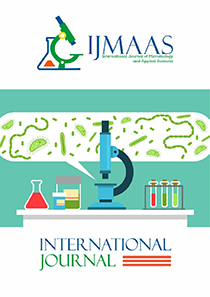Prevalence of Fungal Infection among Presumptive Tuberculosis Patients
Vol. 3, Issue 3, 2024
KEYWORDS
Candida albicans, Aspergillus udagawae, fungal infections, presumptive tuberculosis, tuberculosis co-infection
Abstract
Tuberculosis (TB) remains a significant global health concern, particularly in resource-constrained settings like Nigeria. Co-infections with fungi further complicate TB diagnosis and management, often leading to misdiagnosis and suboptimal treatment outcomes. Fungal infections, which mimic TB symptoms, are common among immunocompromised individuals, particularly those with presumptive TB. This cross-sectional study aimed to determine the prevalence and spectrum of fungal infections among 350 presumptive TB patients attending the Directly Observed Therapy (DOT) clinic of the University of Port Harcourt Teaching Hospital, Nigeria. Sputum samples were collected and analyzed for fungal and TB pathogens using culture, molecular methods, and microscopy. Fungal species were identified through standard mycological techniques and molecular characterization. Data on socio-demographic characteristics and clinical history were obtained through questionnaires and standard laboratory request forms. Statistical analyses were performed using descriptive and inferential statistics, with a significance level of p<0.05. The general prevalence of fungal infections was 64.3%, with 225 participants testing positive. Molecular identification revealed Candida albicans as the most prevalent fungal pathogen (61.8%), followed by Aspergillus udagawae (11.1%) and Aureobasidium pullulans (8.9%). Co-infection of TB and fungi was observed in 8.0% of the participants. Males constituted 61.7% of the study population, and the age group 21–30 years had the highest representation (32.3%). Marital status analysis showed a higher prevalence of single participants (57.7%). The high prevalence of fungal infections among presumptive TB patients highlights a critical need for integrated diagnostic and treatment strategies targeting fungal co-infections. Candida albicans and Aspergillus udagawae were the predominant pathogens identified. Routine fungal screening for TB patients, improved diagnostic facilities, and antifungal therapies should be incorporated into TB management programs. Further studies focusing on antifungal resistance and clinical outcomes of co-infected patients are recommended.
Current: Vol. 4, Issue 1, 2025

Call for papers
The International Journal of Microbiology and Applied Sciences warmly welcome your valuable articles for publication.
